Michael John Fu
age ~44
from Cleveland, OH
- Also known as:
-
- Michael J Fu
- Michael R Fu
- Sunnyvale Fu
- Phone and address:
- 6572 Gates Mills Blvd, Cleveland, OH 44124
Michael Fu Phones & Addresses
- 6572 Gates Mills Blvd, Cleveland, OH 44124
- 2545 Kenilworth Ave, Cleveland, OH 44106 • 2163209137
- Mayfield Heights, OH
- 1751 Homestead Rd, Santa Clara, CA 95050 • 4082481813
- 731 Iris Ave, Sunnyvale, CA 94086 • 4087323162
- 19751 Bixby Dr, Cupertino, CA 95014 • 4082578359
- Berkeley, CA
Work
-
Company:RevolutionJul 2013
-
Position:Curriculum writer/developer
Education
-
School / High School:UNIVERSITY OF CALIFORNIA, BERKELEY- Berkeley, CAMay 2009
-
Specialities:M.A. in Science and Math Education
Wikipedia References

Michael Fuß
Name / Title
Company / Classification
Phones & Addresses
Chief Technology Officer
Primary Global Research, LLC
Data Processing/Preparation · Information Technology Consulting Svcs
Data Processing/Preparation · Information Technology Consulting Svcs
1975 W El Cam, Mountain View, CA 94040
PO Box 3780, Saratoga, CA 95070
1975 W El Camino Real, Mountain View, CA 94040
6509608182, 6509601800
PO Box 3780, Saratoga, CA 95070
1975 W El Camino Real, Mountain View, CA 94040
6509608182, 6509601800
Resumes

Assistant Professor, Electrical Engineering And Computer Science
view sourceLocation:
Akron, OH
Industry:
Higher Education
Work:
Case Western Reserve University
Assistant Professor, Electrical Engineering and Computer Science
Case Western Reserve University Jul 2012 - Jun 2017
Research Assistant Professor, Department of Electrical Engineering and Computer Science
Metrohealth Jul 2012 - Jun 2017
Assistant Professor, Physical Medicine and Rehabilitation
Cleveland Functional Electrical Stimulation (Fes) Center Aug 2011 - Jun 2012
Biomedical Research Engineer
Case Western Reserve University Jan 2006 - May 2011
Graduate Research Assistant
Assistant Professor, Electrical Engineering and Computer Science
Case Western Reserve University Jul 2012 - Jun 2017
Research Assistant Professor, Department of Electrical Engineering and Computer Science
Metrohealth Jul 2012 - Jun 2017
Assistant Professor, Physical Medicine and Rehabilitation
Cleveland Functional Electrical Stimulation (Fes) Center Aug 2011 - Jun 2012
Biomedical Research Engineer
Case Western Reserve University Jan 2006 - May 2011
Graduate Research Assistant
Education:
Case Western Reserve University 2006 - 2011
Doctorates, Doctor of Philosophy, Electrical Engineering Case Western Reserve University 2003 - 2006
Master of Science, Masters, Electrical Engineering University of California, Berkeley 1999 - 2003
Bachelors, Bachelor of Science
Doctorates, Doctor of Philosophy, Electrical Engineering Case Western Reserve University 2003 - 2006
Master of Science, Masters, Electrical Engineering University of California, Berkeley 1999 - 2003
Bachelors, Bachelor of Science
Skills:
Signal Processing
Robotics
Matlab
Biomedical Engineering
Simulations
Sensors
Simulink
Medical Devices
Characterization
Biomechanics
C++
Electrical Engineering
Robotics
Matlab
Biomedical Engineering
Simulations
Sensors
Simulink
Medical Devices
Characterization
Biomechanics
C++
Electrical Engineering
Languages:
Mandarin
Certifications:
Clinical Research

Michael Fu
view source
Michael Fu
view sourceLocation:
United States

Michael Fu
view sourceLocation:
United States

Michael Fu Los Angeles, CA
view sourceWork:
Revolution
Jul 2013 to 2000
Curriculum Writer/Developer Google Inc
Mountain View, CA
Oct 2012 to Oct 2013
Enterprise Product Fulfillment Specialist Westlake Middle School
Oakland, CA
Aug 2011 to Jun 2012
Middle School Science Instructor Making Waves Academy
Richmond, CA
Jul 2010 to Jun 2011
Middle School Math Instructor
Jul 2013 to 2000
Curriculum Writer/Developer Google Inc
Mountain View, CA
Oct 2012 to Oct 2013
Enterprise Product Fulfillment Specialist Westlake Middle School
Oakland, CA
Aug 2011 to Jun 2012
Middle School Science Instructor Making Waves Academy
Richmond, CA
Jul 2010 to Jun 2011
Middle School Math Instructor
Education:
UNIVERSITY OF CALIFORNIA, BERKELEY
Berkeley, CA
May 2009
M.A. in Science and Math Education
Berkeley, CA
May 2009
M.A. in Science and Math Education
Isbn (Books And Publications)

Conditional Monte Carlo: Gradient Estimation and Optimization Applications
view sourceAuthor
Michael C. Fu
ISBN #
0792398734
Medicine Doctors

Michael M. Fu
view sourceSpecialties:
Optometry
Work:
D'Ambrosio Eye Care IncDambrosio Eye Care Inc
479 Old Un Tpke, Lancaster, MA 01523
9785373900 (phone), 9785376030 (fax)
Dambrosio Eye Care
100 Powdermill Rd, Acton, MA 01720
9788977212 (phone), 9784610345 (fax)
Dambrosio Eye Care Inc
74 Main St, Gardner, MA 01440
9786323930 (phone), 9785376030 (fax)
479 Old Un Tpke, Lancaster, MA 01523
9785373900 (phone), 9785376030 (fax)
Dambrosio Eye Care
100 Powdermill Rd, Acton, MA 01720
9788977212 (phone), 9784610345 (fax)
Dambrosio Eye Care Inc
74 Main St, Gardner, MA 01440
9786323930 (phone), 9785376030 (fax)
Procedures:
Ophthalmological Exam
Languages:
English
Description:
Dr. Fu works in Acton, MA and 2 other locations and specializes in Optometry. Dr. Fu is affiliated with Emerson Hospital, HealthAlliance Hospital Leominster, Henry Heywood Memorial Hospital and St Vincent Hospital.
Us Patents
-
Multiple Pass Optimization For Automatic Electronic Circuit Placement
view source -
US Patent:6766500, Jul 20, 2004
-
Filed:Dec 6, 2001
-
Appl. No.:10/016232
-
Inventors:Ross A. Donelly - Sunnyvale CA
William C. Naylor - San Jose CA
Michael Fu - San Jose CA -
Assignee:Synopsys, Inc. - Mountain View CA
-
International Classification:G06F 1750
-
US Classification:716 10, 716 13, 716 14, 716 12, 716 1
-
Abstract:A computer implemented process for the automatic creation of integrated circuit (IC) geometry including a multiple pass process flow using multiple passes of direct timing driven placement after a first pass of non-direct timing driven placement. First, a high level description of the circuit design may be synthesized. Next, a non-direct timing driven placement process may place the design. Then the placed design may be routed. Alternatively, routability may be estimated. After routing, a modified design may be resynthesized. The resynthesized design may then be placed according to a direct timing driven placement process. This sequence may be repeated several times.
-
System For Storing, Displaying, And Navigating Content Data Regarding Market Driven Industries
view source -
US Patent:20070276871, Nov 29, 2007
-
Filed:May 18, 2007
-
Appl. No.:11/750661
-
Inventors:Michael Fu - San Jose CA, US
Harold Sun - Tigard OR, US
Unni Narayanan - Sunnyvale CA, US
William Ward Carey - Hillsborough CA, US
Phani Saripella - Santa Clara CA, US -
Assignee:PRIMARY GLOBAL RESEARCH, LLC - Mountain View CA
-
International Classification:G06F 7/00
-
US Classification:7071041
-
Abstract:A model and system employing the model provides an organized structure for storing, displaying, and navigating content data regarding instruments for market driven industries (i.e., securities). A Market Research Model (MRM) paradigm is used to represent elemental concepts, a plurality of specific classes of entities form the MRM, and an interface is used to assemble, maintain, and interact with the model. Information may be added to the model by a research provider and provided to an end user on a subscription basis. The user is provided with an interconnected, navigable model of an item of interest for research and decision-making support.
-
Smart Toys
view source -
US Patent:6631351, Oct 7, 2003
-
Filed:Sep 14, 2000
-
Appl. No.:09/661537
-
Inventors:Surya Ramachandran - Oak Park IL
Anand Kancherlapalli - Oak Park IL
Michael C. Fu - Sunnyvale CA -
Assignee:Aidentity Matrix - Elmhurst IL
-
International Classification:G10L 1102
-
US Classification:704270, 7042701, 704272, 704251, 704258, 704 9, 704 10
-
Abstract:Talking toys perform simulated conversations with one another. The toys each include a forest of decision graphs. The forest of decision graphs is the same for each toy. Each of the decision graphs corresponds to a conversation and includes a number of nodes, each of which corresponds to a portion of the conversation. The nodes also include one or more contexts which connect the nodes to children nodes. As a result, the selection of the context directs the progression of conversation. The toys select a decision graph/conversation that includes all or most of the toys as participants. The conversation is then performed as the toys traverse the selected decision graph. The toys transfer messages back and forth via a wireless transmission and reception arrangement as they traverse the decision graph. The toys play the portions of the conversation through a speaker. Each of the toys includes an architecture including a physical layer, which includes the transmission and reception circuitry, and an application layer that contains the forest of decision graphs as well as a participant list and identification information for a conversation manager.
-
Streaming Synchronized Media Content To Separate Devices
view source -
US Patent:20200358849, Nov 12, 2020
-
Filed:Jul 28, 2020
-
Appl. No.:16/940600
-
Inventors:- San Jose CA, US
Michael Chin-Ming FU - Cupertino CA, US -
International Classification:H04L 29/08
H04L 29/06
H04N 21/4363
H04N 21/43 -
Abstract:Described are system, apparatus, article of manufacture, method, or computer program product embodiments for controlling streaming of media content. An embodiment operates by halting a presentation of future content from a buffer upon determining that the buffer is exhausted of content to present. The embodiment includes receiving one or more packets over a network connection, the one or more packets including media information corresponding to a first portion of streaming media content, in which the first portion corresponds to a second portion of the streaming media content. The one or more packets in a buffer are stored as buffered content. Responsive to determining that the network connection is not experiencing a burst condition, the buffer is trimmed. Then, presentation of buffered content is resumed and the first portion is caused to be presented in sync with the second portion.
-
Controlling Display Device Settings From A Mobile Device Touch Interface
view source -
US Patent:20200249827, Aug 6, 2020
-
Filed:Jan 7, 2020
-
Appl. No.:16/736283
-
Inventors:- Los Gatos CA, US
James Harold SHAW - Portland OR, US
Anita RANGANATH - Cupertino CA, US
Gregory S. GATES - Saratoga CA, US
Michael Chin-Ming FU - Cupertino CA, US
Matthew WEE - San Jose CA, US
Kevin Ralph COOPER - San Jose CA, US
Charles L. SMITH - Andover MA, US
Harold SUN - Tigard OR, US -
International Classification:G06F 3/0484
H04N 5/44
H04N 21/422
G06F 3/0488
G06F 3/14
H04N 21/4363
H04N 21/485 -
Abstract:System, method, and computer product embodiments for controlling a display device's display settings from a computing device's touch-based user interface are described. In an embodiment, the computing device establishes a wireless connectivity with the display device. The computing device sends a command generated to query information related to the display setting. Then, the computing device receives the queried information from the display device. The computing device configures a graphical user interface (GUI) with the queried information to display configurations of the display settings on the touchscreen. The configurations include the display settings currently configured in the display device. The computing device further enables, within GUI, a displayed configuration from the display configurations to be calibrated by one or more touch gestures on the touchscreen.
-
Flexible Output Of Streaming Media
view source -
US Patent:20180035155, Feb 1, 2018
-
Filed:Aug 1, 2016
-
Appl. No.:15/225338
-
Inventors:- Saratoga CA, US
Anthony Wood - Saratoga CA, US
Gregory S. Gates - Saratoga CA, US
Michael Chin-Ming Fu - Cupertino CA, US -
International Classification:H04N 21/41
H04N 21/6587
H04N 21/422
H04N 21/6377
H04N 21/234
H04N 21/472
H04N 21/436
H04N 21/63 -
Abstract:Disclosed herein are system, method, and computer program product embodiments for flexible output of streaming media. An embodiment operates by receiving, at a media server, media over a network. Output media, corresponding to the received media, is streamed to a display device. The output media includes a video component and an audio component. A command is received. Responsive to the command, the streaming of the video component to the display device is discontinued. A streaming of the video component is begun to a mobile device at a point in the video component corresponding where the video was discontinued.
-
Streaming Synchronized Media Content To Separate Devices
view source -
US Patent:20170289246, Oct 5, 2017
-
Filed:Jul 27, 2016
-
Appl. No.:15/220696
-
Inventors:- Saratoga CA, US
Michael Chin-Ming FU - Cupertino CA, US -
International Classification:H04L 29/08
H04L 29/06 -
Abstract:Described are system, apparatus, article of manufacture, method, or computer program product embodiments for controlling streaming of media content. An embodiment operates by halting a presentation of future content from a buffer upon determining that the buffer is exhausted of content to present. The embodiment includes receiving one or more packets over a network connection, the one or more packets including media information corresponding to a first portion of streaming media content, in which the first portion corresponds to a second portion of the streaming media content. The one or more packets in a buffer are stored as buffered content. Responsive to determining that the network connection is not experiencing a burst condition, the buffer is trimmed. Then, presentation of buffered content is resumed and the first portion is caused to be presented in sync with the second portion.
-
Efficient Communication Interface For Casting Interactively Controlled Visual Content
view source -
US Patent:20170269895, Sep 21, 2017
-
Filed:Mar 15, 2016
-
Appl. No.:15/070800
-
Inventors:Harold Sun - Tigard OR, US
Michael Chin-Ming Fu - Cupertino CA, US -
International Classification:G06F 3/14
G06T 3/20
G06T 3/40
G06T 3/00 -
Abstract:System, method, and computer product embodiments for efficiently casting interactively-controlled visual content displayed on a first display screen to a second display screen. In an embodiment, the computing device sends the visual content displayed on the first display screen to a multimedia device for displaying on the second display screen. Upon receipt of an instruction that visually manipulates how the visual content is displayed on the first display screen, the computing device generates a command representative of the received instruction. The command may specify a positional relationship between the center of the first display screen and the visual content displayed on the first display screen. Then, the computing devices sends the command to the multimedia device that causes the second display screen to display the visual content according to the positional relationship.
Plaxo

Michael Militano WING CHU...
view source123 Bowery Street CHINATOWN, NY 10002
Flickr
Myspace
Googleplus
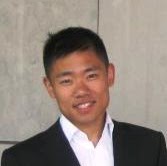
Michael Fu
Work:
General Mills
Education:
Schulich School of Business - Marketing
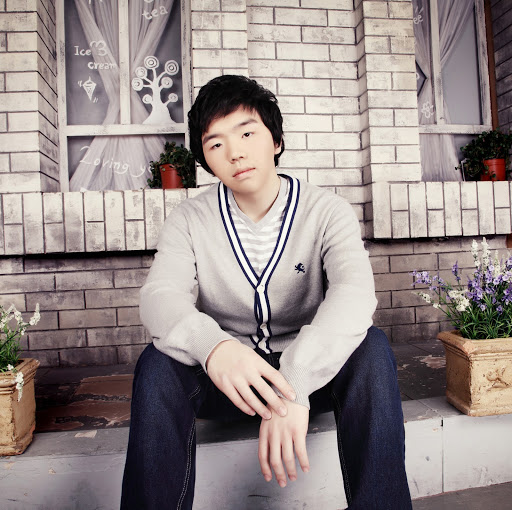
Michael Fu
Education:
Massachusetts Institute of Technology - Chemical Engineering and Economics, Beavercreek High School
About:
Hi, my name is Michael. I like long walks on the beach and linear algebra.
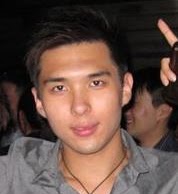
Michael Fu
Education:
Hong Kong University of Science and Technology - BBA
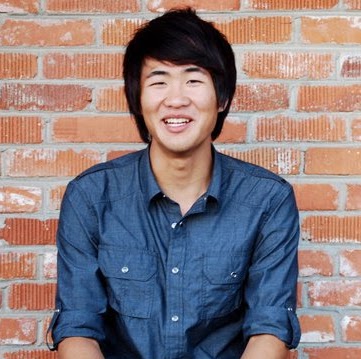
Michael Fu
Education:
University of California, Berkeley - Molecular & Cell Biology
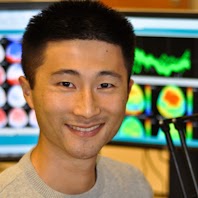
Michael Fu
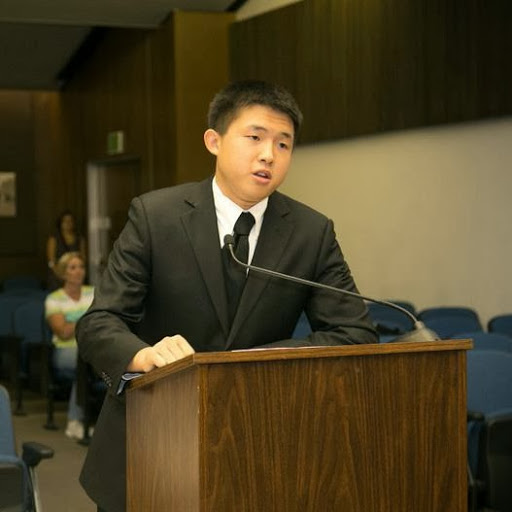
Michael Fu

Michael Fu
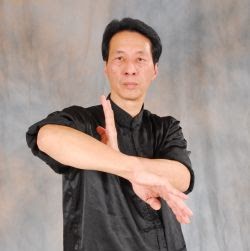
Michael Fu
Classmates

Sierra - Enterprise Eleme...
view sourceGraduates:
Michael Fu (1995-1999),
April Cook (1967-1967),
Tony Dias (1960-1966),
Samantha Bruton (1989-1996)
April Cook (1967-1967),
Tony Dias (1960-1966),
Samantha Bruton (1989-1996)

Caoyang High School, Shan...
view sourceGraduates:
Michael Fu (1994-1998),
WeiJia Lou (1994-1998),
Xiaofei Wan (1991-1995),
Yi Yang (1981-1985),
Yanzhang Zhao (1992-1996),
Changcheng Zhao (1989-1993)
WeiJia Lou (1994-1998),
Xiaofei Wan (1991-1995),
Yi Yang (1981-1985),
Yanzhang Zhao (1992-1996),
Changcheng Zhao (1989-1993)

North Royalton Middle Sch...
view sourceGraduates:
Eric Schaffran (2000-2004),
Mike Fu (1998-1999),
Jackie Dinallo (2002-2003),
Anthony Tomaro (2000-2004),
Tyler Hill (2000-2004)
Mike Fu (1998-1999),
Jackie Dinallo (2002-2003),
Anthony Tomaro (2000-2004),
Tyler Hill (2000-2004)

Harper's Choice Middle Sc...
view sourceGraduates:
David Westfall (1981-1982),
Wael Ali (1999-2003),
Alicia Darden (1990-1991),
Christine Broglio (1981-1984),
Mike Fu (1996-1998)
Wael Ali (1999-2003),
Alicia Darden (1990-1991),
Christine Broglio (1981-1984),
Mike Fu (1996-1998)
Youtube

Michael Fu
view source
Michael MuMu Fu
view source
Michael Fu Tan
view source
Michael Fu
view source
Mike Fu
view source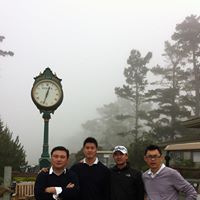
Michael Fu
view source
Michael Fu
view source
Michael Fu
view sourceGet Report for Michael John Fu from Cleveland, OH, age ~44













